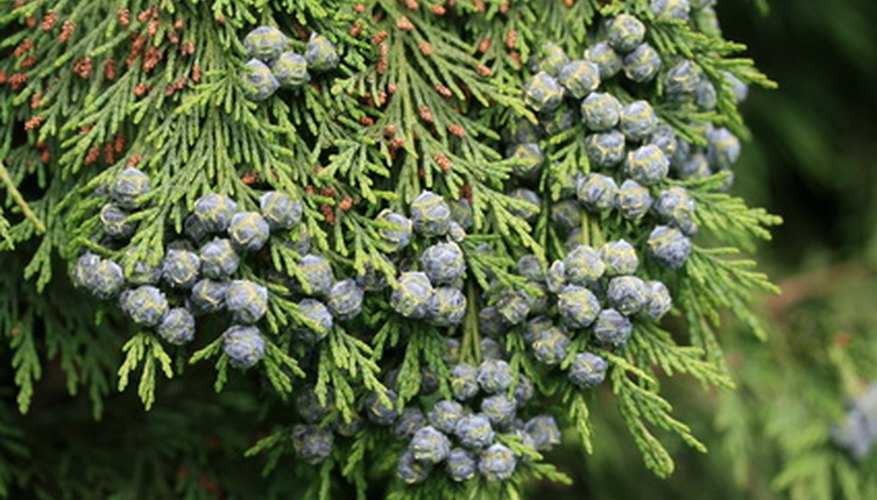The term conifer refers to the Latin word meaning "cone bearer." Although the majority of conifers bear cones, the yew and the juniper bear fruit. The family of conifers is the largest plants known on earth, consisting of upwards of 500 species. There are different sizes of conifers to fit any landscape and you can plant your chosen conifer from seed, provided you have well-drained soil and the room to grow your chosen species.
Stratify (chill) arbor vitae, chamaecyparis, firs, hemlocks and sequoia seeds before planting. Cedar and spruce do not require stratification. Conifer seeds that require stratification require planting in late fall, so that they can chill in the ground over the winter. Cedar and spruce have no required planting time.
- The term conifer refers to the Latin word meaning "cone bearer."
- Conifer seeds that require stratification require planting in late fall, so that they can chill in the ground over the winter.
Prepare the soil for planting the conifer seeds. Break up the soil with a pitchfork and test the soil pH using a soil testing kit purchased from a garden centre. Conifers prefer soil with a pH between 6.0 and 7.0.
Amend the soil with lime after testing if the soil pH is below 6.0. Amend with peat moss if the soil pH is above 7.0. Add either amendment according to label instructions.
- Prepare the soil for planting the conifer seeds.
- Amend the soil with lime after testing if the soil pH is below 6.0.
Push two to three conifer seeds ½ inch into the soil in late fall, before the first frost of winter. You can plant any type of conifer seed during this time of year, keeping in mind that all but the cedar and spruce require fall planting.
Pat the soil over top of the seeds to remove air pockets. Place a 10-inch by 10-inch piece of metal screening over the conifer seeds. Secure the corners of the metal screening with heavy stones. The screening will prevent hungry wildlife from getting to the seeds.
Spread a 3-inch layer of mulch over the metal screening. Mulching with straw, pine needles, dead leaves or bark chips will insulate the seeds during cold winter frosts. It will also help reduce weed growth.
- Pat the soil over top of the seeds to remove air pockets.
- Mulching with straw, pine needles, dead leaves or bark chips will insulate the seeds during cold winter frosts.
Water the soil generously after planting the seeds using a soaker hose. Keep the soil moist at all times, refraining from watering when the ground is snow covered. Resume watering again after the spring thaw. Provide the growing seedlings with at least 1-inch of water per week.
Weed out the weakest seedlings in the spring, when they reach approximately 6 inches in height. Allow the healthiest looking conifer seedling to remain, discarding the remaining seedlings.
TIP
Continue watering the conifer seedling throughout the first growing season. Conifer trees will only require watering during droughts once established. Feed the conifer seedling a high-nitrogen, slow-release fertiliser. Apply the fertiliser according to label instructions.
WARNING
Do not over water the conifer. If the soil feels moist at a depth of 1 inch, skip watering, and check the soil again in a few days.
